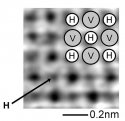Whatever dude. Vesicles has already pointed out the many places where you're just wrong.
Be your self do not depend in others to protect your points have you own personality
Whatever dude. Vesicles has already pointed out the many places where you're just wrong.
However here we started everything because mister Latenalzy says no one can know the lift an aircraft generates, and i say yes you can, there are formulas to do it and there are graphs that show trends in airfoil design to know the coefficient of lift needed for the airfoil and thus complete the formula.
then stop science since you are chasing smoke all your theories then are a waste of time
Take the model of an atom. We have a small sphere of nucleus with a whole bunch of even smaller spheres of electrons going around it. This has been he model for an atom for centuries. However is this the reality? No one knows. And I mean that. No one at this point knows what an atom actually looks like. The sphere and orbit model stands because it can still serve it's goal: to predict. It's not a reality by any stretch of imagination. Now some people believe subatomic particles are string-like, not spheres and not orbits. Is the string theory THE reality? NO! It is a model that can potentially serve as a way to interpret phenomenon and to predict outcome. It is not an attempt to replicate reality.

Completely off topic and gross miss understanding. Your representation of an atom is dumbfound version for simpletons since Heisenberg's Uncertainty Principle is too complicated to understand. Fluid dynamics is not based on quantum mechanics and does follow a straight forward principle that can be represented through mathematical equations with NO probabilities involved.
As for your question of how an atom looks like there are various electron microscope pictures like the one below.
View attachment 9614
Basically you are comparing Apples with a slab of meat.
Completely off topic and gross miss understanding. Your representation of an atom is dumbfound version for simpletons since Heisenberg's Uncertainty Principle is too complicated to understand. Fluid dynamics is not based on quantum mechanics and does follow a straight forward principle that can be represented through mathematical equations with NO probabilities involved.
As for your question of how an atom looks like there are various electron microscope pictures like the one below.
View attachment 9614
Basically you are comparing Apples with a slab of meat.
The above argument, with the use of fantasy numbers to battle cold hard figures, reeks of desperation. Even if economy of scale does reduce unit cost in the case of F-35, that only tells us making more drives things cheaper, not making things small drives things cheaper. It also is not unheard of for fighter aircraft with identical size and identical configuration to differ significantly in cost.
It shouldn't cost that much, but it does. The excessive costs stem from piling a bunch of requirements into a small airframe, reflecting limitations. Some of those requirements are to enable the aircraft to do well in both WVR and BVR engagements to survive. It would be pointless to have an aircraft that "optimizes" for WVR engagement then have that aircraft easily gets blasted out of the sky due to deficiency in BVR engagement capabilities. So, the notion that small fighters do well in WVR engagement and large fighters do well in BVR engagement is just a form of black-or-white thinking.
I didn't say skipping spares. I said spares smooth out oversupply. You produce enough engines for new, refit, and spares for both. Technically your capacity is supposed to drop off anyways as you reach end of production rub of the fighter. If your rate of production is creating more engines than you need that simply means you're ahead in your production of spares and replacements, which means an earlier slowdown or end of production, but that's hardly a problem. That's assuming you don't simply offset that capacity to a related project. Yes the SF-A is a parallel project, but the point is if they share the same production process when you're ramping up production for that you don't need to build entirely new capacity, you can just reallocate the excess.
The problem is that cost is a function of production rates and vice versa. The fastest way to increase production rates is to duplicate or scale-up existing production facilities, but the problem with that is that a given production facility is good to produce a certain number of engines and by not producing the full amount of engines you'll waste money.
And as far as SF-A goes, while the SF-A is expected to be derived from the WS-15 core for reduced costs and the potential for retooling, there will likely be substantial differences between SF-A core and the WS-15 core. Take the CFM-56, for instance, on which the WS-10 was based. The CFM-56 was a commercial jet engine intended to power jet transports, but it was ultimately derived from the F100 engine. If sharing the same core should have given you substantial advantages in production and tooling, it took a hell of a lot of effort for the Chinese to reverse engineer the CFM-56 core into a fighter-capable turbofan which still doesn't have comparable capabilities to the F100 on which it was based.
